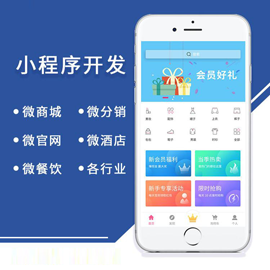Vue如何實(shí)現(xiàn)分頁效果與購物車功能-創(chuàng)新互聯(lián)
這篇文章將為大家詳細(xì)講解有關(guān)Vue如何實(shí)現(xiàn)分頁效果與購物車功能,小編覺得挺實(shí)用的,因此分享給大家做個(gè)參考,希望大家閱讀完這篇文章后可以有所收獲。

分頁組件
首先來創(chuàng)建項(xiàng)目:
分頁組件,做項(xiàng)目不要寫動(dòng)手寫代碼,要想想業(yè)務(wù)邏輯,怎么寫,如何寫才是最好的呈現(xiàn)方式,做項(xiàng)目不急,要先想好整體的框架,從底層一開始最想要的是什么做起。
先動(dòng)代碼,邊做邊想是會(huì)出問題的,而且還會(huì)卡殼,讓你半路出家的。
分頁組件,你覺得要什么內(nèi)容,是頁面?如果不懂可以去看看別人的分頁是怎么做的,考慮業(yè)務(wù)邏輯,整體出發(fā)去思考問題。要不然我去百度看看,別人的分頁效果。

看了后做不出來也是沒有關(guān)系的,我們呢?
可以從底部出發(fā),從最小的邏輯開始,從做這個(gè)需要考慮到什么想起,一步一步來,做好局部的功能,這個(gè)功能做好了,才去做另一個(gè)功能或者頁面哦~
分頁組件我們需要的字段有哪些?
你想想,當(dāng)前頁,是不是有,curpage當(dāng)前頁,每頁的大小,pagesize,總的頁數(shù),total,等等,考慮不到的,沒關(guān)系看看別人的有什么,想好后才寫代碼,那才快。
不說無用,先創(chuàng)建項(xiàng)目:

寫的分頁組件
props: ['total'],
data: function() {
return {
page: 1, // 當(dāng)前頁碼
pagesize: 10 // 每一頁的記錄數(shù)
});
},是不是只能想到那么多呢?那就先寫那么多,然后再想想需要什么:
總頁碼 = Math.ceil(總記錄數(shù)/每一頁記錄數(shù))
總頁碼數(shù),7頁,或6頁,當(dāng)前是向上取整,每一頁記錄數(shù)10頁,總記錄數(shù),總的多少頁。如80除10頁,8頁。
math.ceil(x)返回大于等于參數(shù)x的最小整數(shù),即對(duì)浮點(diǎn)數(shù)向上取整.
單擊事件,切換不同的頁面的效果。
<div id="app">
<h2>分頁組件</h2>
//父
<page-component :total="total"></page-component>
</div>
<template id="page-component">
<ul class="pagination">
<li :class="p == page ? 'page-item active' : 'page-item'"
v-for="p in pagecount">
<a href="#" rel="external nofollow" class="page-link" @click.prevent="page=p">
{{p}}
</a>
</li>
</ul>
</template>@click.stop 阻止事件冒泡
@click.prevent 阻止事件的默認(rèn)行為,
<script src="vue.js"> </script>
<script>
// 定義組件
const PageComponent = {
name: 'PageComponent',
template: '#page-component',
props: ['total'],
data: function() {
return {
page: 1, // 當(dāng)前頁碼
pagesize: 10 // 每一頁的記錄數(shù)
};
},
computed: {
pagecount: function() {
// 總頁數(shù)
return Math.ceil(this.total / this.pagesize);
}
}
};
// 創(chuàng)建Vue實(shí)例對(duì)象
const app = new Vue({
el: '#app',
data: {
total: 35
},
components: {
PageComponent
}
});
</script>分頁效果大致如此。
購物車組件
購物車組件,是做項(xiàng)目不可少的,面試也是,動(dòng)不動(dòng)就叫我上機(jī)寫個(gè)購物車的組件,寫就寫咯,購物車時(shí)做商城項(xiàng)目不可少的,寫好購物車組件會(huì)很方便,簡書代碼的重復(fù)性。
那么想想購物車組件有什么內(nèi)容呢?
購物車,是不是有:商品名稱,單價(jià),增加刪減單品的數(shù)量呢?還有就是訂單總金額數(shù)呢?這些是必不可少的哦!!!

購物車組件不知道有什么也是可以去看看別人的先,看看有什么,購物車組件一般包含顯示商品的名稱,單價(jià),購買的數(shù)量以及訂單總金額,通過增加或減少商品的購買的數(shù)據(jù),并同步更改訂單的總金額。
總金額同步,我們能想到的是用什么指令,是不是v-model
v-model指令的雙向綁定
// v-model指令雙向綁定
updateCount: function() {
// 觸發(fā)input事件
this.$emit('input', this.count);
}vue中監(jiān)聽input輸入值變化的事件,原生事件;
this.$emit(),是觸發(fā)器,用于父子組件的傳值。
this.$emit(事件,值)
父組件:
<Group title="用戶名" v-model="username"></Group>
子組件:
<template>
<div>
<div class="group">
<label>{{title}}</label>
<input type="text" placeholder="請(qǐng)輸入" @input="changeData()" v-model="val">
</div>
</div>
</template>
<script>
export default {
props:["title"],
data () {
return {
val:""
}
},
methods:{
changeData:function(){
this.$emit('input',this.val);
}
}
}
</script>當(dāng)商品的購買數(shù)量發(fā)生變化時(shí),訂單總金額也再變。
這個(gè)時(shí)候應(yīng)該想到computed屬性:
// computed屬性定義下的:
amount: function() {
var money = 0;
this.goodslist.forEach(goods => {
money += parseInt(goods.count) * parseInt(goods.price);
});
return money;
}v-model雙向綁定實(shí)際上是通過子組件中$emit方法派發(fā)的input事件,父組件監(jiān)聽input事件中傳遞的value值,并存儲(chǔ)在父組件data中,然后父組件通過prop的形式傳遞給子組件value值,在子組件中綁定Input的value屬性。
代碼:
// 父組件 <myDa :value="value" @input="value=$event"></my-comp>
:value = "value"
<input type="text" @input="$emit('input', $event.target.value)" :value="value">子組件使用監(jiān)聽事件使用
emit(eventName)觸發(fā)事件
購物車最終代碼:
<div id="app">
<div v-for="goods in goodslist">
<p>商品名稱:{{goods.name}}</p>
<p>單價(jià):{{goods.price}}</p>
<cart-component v-model="goods.count">
</cart-component>
<hr>
</div>
<div>訂單總金額:{{amount}}元
</div>
</div>
<template id="cart-component">
<div class="cart">
<button @click="count--; updateCount();">
-
</button>
<input type="text" v-model="count"
@input=updateCount()">
<button @click="count++; updateCount();">
+
</button>
</div>
</template>
<script>
// 定義組件
const CartComponent = {
name: 'Cart',
template: '#cart-component',
// 在組件中不可直接修改props數(shù)據(jù)
props: ['value'],
data: function() {
return {
count: this.value
};
},
methods: {
// v-model指令雙向綁定,修改父組件內(nèi)容
updateCount: function() {
// 觸發(fā)input事件
this.$emit('input',this.count);
}
}
};
// 創(chuàng)建vue實(shí)例對(duì)象
const app = new Vue({
el: '#app',
data: {
goodslist; [{
name: 'apple',
price: 2,
count: 2
},{
name: 'dada',
price: 222222222222,
count: 0
}]
},
computed: {
// 當(dāng)前訂單總金額
amount: function(){
var money=0
this.goodslist.forEach(goods=>{
money += pareseInt(goods.count) * parseInt(goods.price);
});
return money;
}
},
components: {
CartComponent
}
});
</script>vue:自定義組件中v-model以及父子組件的雙向綁定
<div id="app">
<p>{{message}}</p>
<input type="text" v-model='message'>
</div>
<script>
var vueApp = new Vue({
el:'#app',
data:{
message:"我其實(shí)是一個(gè)語法糖"
}
})
</script>
<div id="app">
<p>{{message}}</p>
<input type="text" v-bind:value='message' @input='message = $event.target.value'>
</div>
<script>
var vueApp = new Vue({
el: '#app',
data: {
message: "我其實(shí)是一個(gè)語法糖"
}
})
</script>以下兩種約等于:
<custom v-model='something'></custom>
<custom :value="something" @input="value => { something = value }"></custom>
<div id="app">
<h2>{{message}}</h2>
<test-model v-model='message'></test-model>
</div>
<script>
Vue.component('test-model', {
template: ` <input v-bind:value='value'
v-on:input="$emit('input', $event.target.value)">`,
})
var vueApp = new Vue({
el: '#app',
data: {
message: '測試數(shù)據(jù)'
},
})
</script>關(guān)于“Vue如何實(shí)現(xiàn)分頁效果與購物車功能”這篇文章就分享到這里了,希望以上內(nèi)容可以對(duì)大家有一定的幫助,使各位可以學(xué)到更多知識(shí),如果覺得文章不錯(cuò),請(qǐng)把它分享出去讓更多的人看到。
本文標(biāo)題:Vue如何實(shí)現(xiàn)分頁效果與購物車功能-創(chuàng)新互聯(lián)
鏈接URL:http://chinadenli.net/article32/hdjpc.html
成都網(wǎng)站建設(shè)公司_創(chuàng)新互聯(lián),為您提供品牌網(wǎng)站建設(shè)、定制網(wǎng)站、手機(jī)網(wǎng)站建設(shè)、小程序開發(fā)、企業(yè)建站、移動(dòng)網(wǎng)站建設(shè)
聲明:本網(wǎng)站發(fā)布的內(nèi)容(圖片、視頻和文字)以用戶投稿、用戶轉(zhuǎn)載內(nèi)容為主,如果涉及侵權(quán)請(qǐng)盡快告知,我們將會(huì)在第一時(shí)間刪除。文章觀點(diǎn)不代表本網(wǎng)站立場,如需處理請(qǐng)聯(lián)系客服。電話:028-86922220;郵箱:631063699@qq.com。內(nèi)容未經(jīng)允許不得轉(zhuǎn)載,或轉(zhuǎn)載時(shí)需注明來源: 創(chuàng)新互聯(lián)
猜你還喜歡下面的內(nèi)容
- win7如何添加網(wǎng)上鄰居怎么添加網(wǎng)絡(luò)鄰居啊?-創(chuàng)新互聯(lián)
- 【OracleDatabase】數(shù)據(jù)庫表空間管理-創(chuàng)新互聯(lián)
- me指的是什么軟件-創(chuàng)新互聯(lián)
- vue中怎么自定義全局組件-創(chuàng)新互聯(lián)
- SimpleDateFormat怎么在Java中使用-創(chuàng)新互聯(lián)
- c++11線程需要互斥量的原因是什么-創(chuàng)新互聯(lián)
- javaSpringCloudConfig環(huán)境庫怎么配置-創(chuàng)新互聯(lián)

- 電商APP設(shè)計(jì)時(shí)有哪些問題要注意-大連APP開發(fā) 2022-07-03
- 不要在你的移動(dòng)應(yīng)用APP設(shè)計(jì)中犯這7個(gè)錯(cuò)誤 2016-08-20
- App設(shè)計(jì)者需要注意的21條禁忌 2016-09-04
- APP設(shè)計(jì)易用性的七個(gè)要素 2022-06-20
- APP設(shè)計(jì)改版如何打造設(shè)計(jì)記憶點(diǎn) 2016-11-05
- 如何建立愉悅APP設(shè)計(jì)引導(dǎo)體驗(yàn)? 2022-06-28
- 小程序的設(shè)計(jì),和App設(shè)計(jì)一樣嗎? 2022-08-31
- 網(wǎng)站logo和APP設(shè)計(jì)的圖標(biāo)歸類 2021-06-13
- APP設(shè)計(jì)中,圖標(biāo)設(shè)計(jì)的這些點(diǎn)你get到了嗎? 2016-08-12
- 電商APP設(shè)計(jì)時(shí)有哪些問題要注意-佛山APP開發(fā) 2022-11-17
- 毀掉APP設(shè)計(jì)的5個(gè)致命錯(cuò)誤 2022-05-14
- 24個(gè)容易忽略的APP設(shè)計(jì)細(xì)節(jié) 2022-05-14